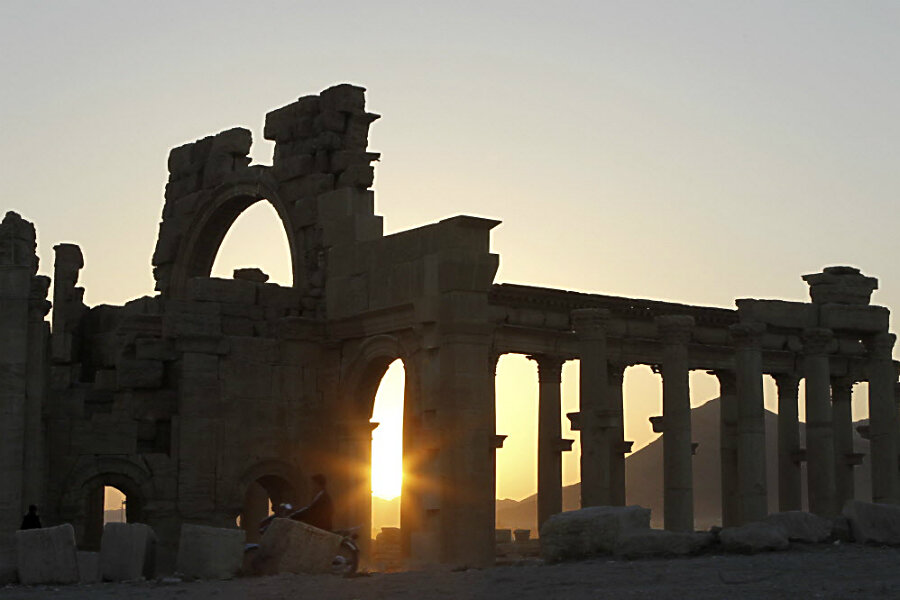Will ISIS destroy Palmyra, 'the bride of the desert'?
Loading...
The ancient oasis city of Palmyra, sitting in the desert to the northeast of Damascus in central Syria, was once a major trade hub between the Roman Empire and Persia, India, and China.
Today the ruins of the city serve as a reminder of the diverse spread of culture and religion that once blanketed the Middle East. The 2,000-year-old city is designated as a World Heritage site, by the United Nations Educational, Scientific and Cultural Organization (UNESECO).
But there's growing concern about the fate of this treasure.
Syrian state-run media, SANA, reported a recent outbreak in fighting between the Syrian government forces and Islamic State fighters in and around the modern Syrian town of Tadmur, within a few hundred meters of ancient Palmyra. The clashes have raised concern from historians and international observers that ISIS could demolish another ancient relic, reports CNN.
"The site has already suffered four years of conflict, it suffered from looting and represents an irreplaceable treasure for the Syrian people and for the world,” UNSECO Director-General Irina Bokova said in a statement. “I appeal to all parties to protect Palmyra and make every effort to prevent its destruction.”
Syria Direct reported that the Assad regime considers Tadmur (and therefore, Palmyra) to be the front line against ISIS operating in the eastern part of the country. The town is viewed as having strategic importance because of the nearby Shaer gas fields, which sustains the Syrian-controlled territory's electrical grid. If Palmyra were to fall, ISIS would have direct access to Damascus and Homs via the highway.
Over the course of ISIS's military offensive across parts of Iraq and Syria, they have demonstrated little regard for the ancient cities and artifacts in the territory the group has come to control.
In Syria, one of the major relics that was damaged over the course of the war was the 11th century crusader castle Crac des Chevaliers' when the walls were damaged by regime airstrikes in 2013. And after four years of brutal conflict many of ancient Syria's historical sites have suffered some kind of damage whether it is intentional or not.
In March, the United Nations issued a statement that said Syria's "rich tapestry of cultural heritage is being ripped to shreds."
However, much more documented destruction of historical sites and artifacts at the hands of ISIS has taken place in Iraq. These included the Assyrian cities of Nimrud and Khorsabad; the Parthian city of Hatra, and the Sunni prophet Jonah's tomb. This is also on top of destroying the Mosul museum and library, both home to numerous ancient artifacts.
So why is the group so bent on destroying historical artifacts?
British historian and novelist Tom Holland argues that ISIS desires to cleanse the region of any sign of its diverse religious past, and also simply to get a shock out of the world community.
"They depend on the sugar rush that comes from staging atrocities and they know that one way to get Western attention is to destroy ruins that have a particular place in the heart of the entire world," Holland told CNN. "This isn't just about Middle Eastern history, these are the wellsprings of the entire global culture. Mesopotamia, Iraq, Syria, this is the wellspring of global civilization. It really couldn't be higher stakes in terms of conservation."








